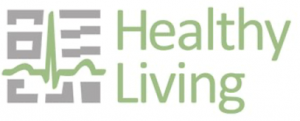Description & objectives of the HealthyLiving project:
The qualitative and quantitative upgrading and sustainable  development of green residential areas is an important, health-related component of the strategy of ecological designs. The HealthyLiving project links ecological, economic and socio-cultural perspectives and discourses. The field of investigation includes historical and current planning strategies for green residential areas as a health resource by analysing the status quo, critical evaluation and the development of optimisation strategies.
development of green residential areas is an important, health-related component of the strategy of ecological designs. The HealthyLiving project links ecological, economic and socio-cultural perspectives and discourses. The field of investigation includes historical and current planning strategies for green residential areas as a health resource by analysing the status quo, critical evaluation and the development of optimisation strategies.
Reference Cities / Practice-Partners:
- Berlin, districts („Kieze“): Sprengelkiez, Ideal-Passage, General Barby Settlement, Paul-Hertz- Settlement, Haselhorst, Alte-Jakobstrasse, Marzahn und Gropiusstadt
- Turin: different districts
- Birmingham: different districts
Project-Team (with various sources of funding, including the Berg Foundation):
Sylvia Butenschön (TU Berlin), the landscape planner Lauranne Pille (IRI THESys, single dissertation funded by the Fritz and Hildegard Berg-Foundation), the environmental engineer Ewelina Skulimowska (exchange scientist from the University of Kraków, Poland and funded by the German Federal Environment Foundation until August 2018), the social geographer Thomas Wachtel (IRI THESys), the landscape architect Luca Battisti in close cooperation with Dr. Federica Larcher (both Department of Agricultural, Forest and Food Sciences, University of Turin), Jan Hogrefe, Frederike Büttner, Sonja Mohr-Stockinger, Hannah-Lea Schmid and Lea Matscheroth (with research stay in Birmingham funded by DAAD scholarship Promos).
Coordination of the project:
Dr. Ina Säumel (Research Group Multifunctional Landscapes, Integrative Research Institute on Transformations of Human-Environment Systems (IRI THESys), Humboldt University Berlin)
Publications:
2023
Mohr-Stockinger, S.; Sanft, S. J.; Büttner F.; Butenschön, S.; Rennert, R.; Säumel, I. (2023). Awakening the sleeping giant of urban green in times of crisis – coverage, cocreation and practical guidelines for optimizing biodiversity-friendly and health-promoting residential greenery. Front. Public Health, 11:1175605. https://doi.org/10.3389/fpubh.2023.1175605
2022
Säumel, I., Sanft, S. (2022) Crisis mediated new discoveries, claims and encounters: Chang-ing use and perception of residential greenery in multistory housing in Berlin, Germany. In: Urban Forestry & Urban Greening. https://doi.org/10.1016/j.ufug.2022.127622
2021
Säumel, I.; Hogrefe, J.; Battisti, L.; Wachtel, T.; Larcher, F. (2021): The healthy green living room at one’s doorstep? Use and perception of residential greenery in Berlin, Germany. In: Urban Forestry & Urban Greening. Volume 58, March 2021, 126949 (Online-Access)
Schmid, H.L.; Säumel, I. (2021) Outlook and Insights: Perception of residential greenery in multistorey housing estates in Berlin, Germany. In: Urban Forestry & Urban Greening. https://doi.org/10.1016/j.ufug.2021.127231
2020
Mohr-Stockinger, S. (2020): HealthyLiving Guidelines “Gesundheitsorientierte Umgestaltung von Wohnumfeldgrün – Leitfaden für Wohnungsbaugenossenschaften” (Online-Access, in German)
2019
Battisti, L.; Pille, L.; Wachtel, T.; Larcher, F.; Säumel, I. (2019) Residential Greenery: State of the Art and Health-Related Ecosystem Services and Disservices in the City of Berlin. Sustainability 2019, 11, 1815. (Online-Access; Special Issue The Future of Sustainable Communities: Planning, Design and Implementation)
2018
Battisti, L.; Pille, L.; Larcher, F.; Butenschöen, S., Säumel, I. (accepted) Managing Urban Greening for Improving Well-being in European Cities. Acta Horticulturae (Online-Access)
Säumel, I. & Butenschön, S. (2018) HealthyLiving: Strategie und Planungsinstrument für gesundheitsförderndes Wohnumfeldgrün in der Stadt der Zukunft. Edition Nachhaltige Gesundheit in Stadt und Region / Sustainable Urban & Regional Health, Bd.1: „Stadt der Zukunft – Gesund und nachhaltig“ Hg.: Fehr, Hornberg
Related Links:
Report in the TU Berlin News Portal: „Gesund leben in der Stadt – Juniorforschungsgruppe entwickelt Planungsinstrumente“